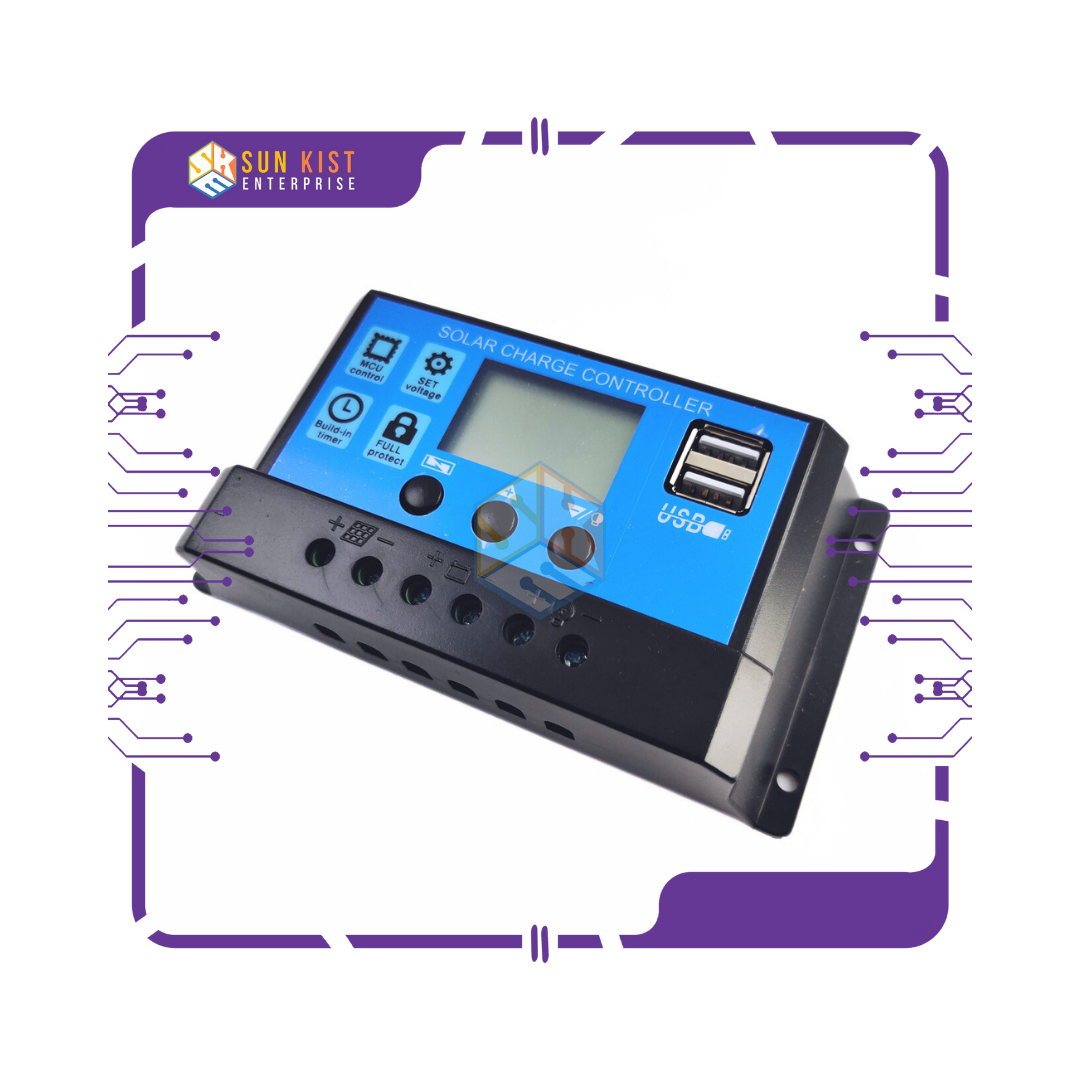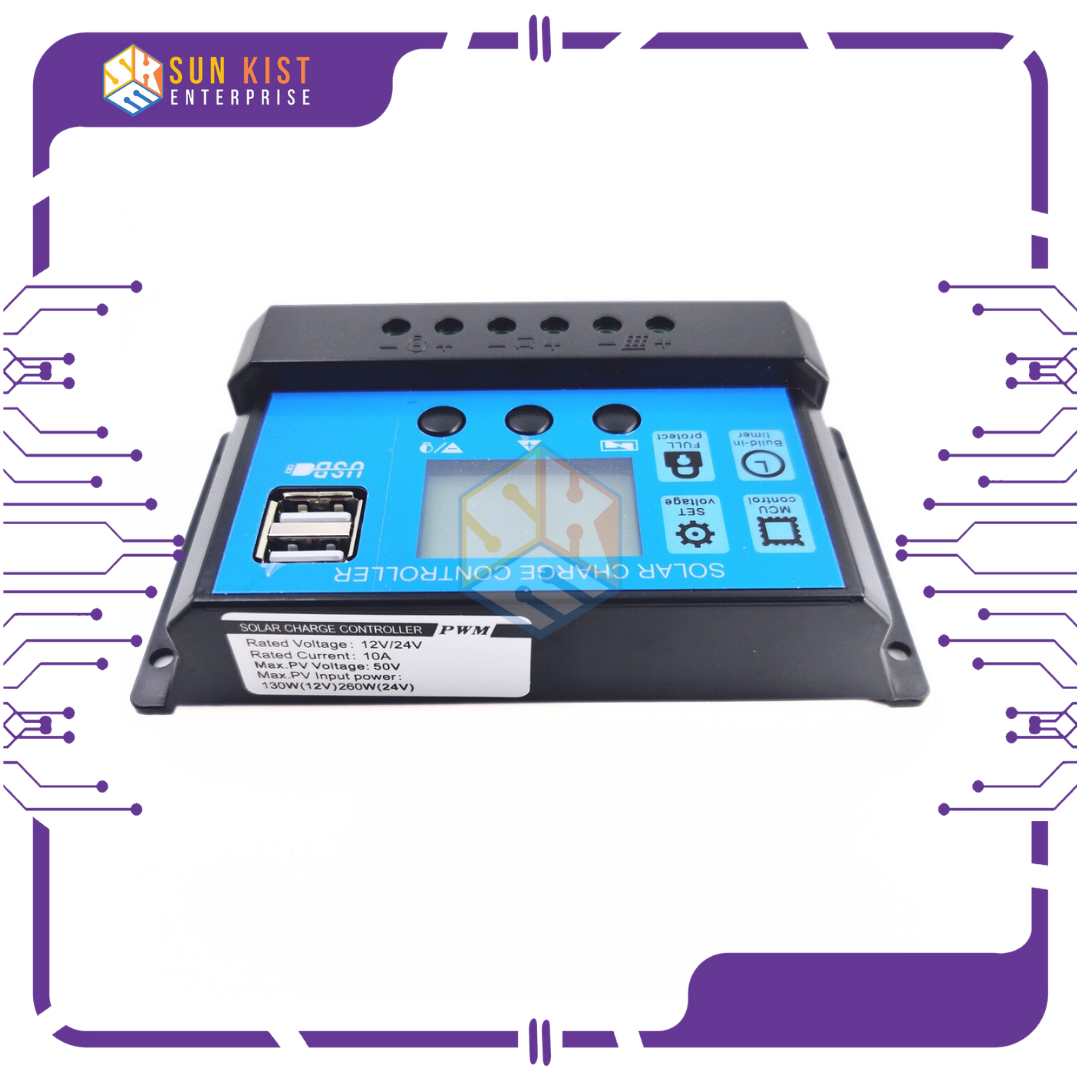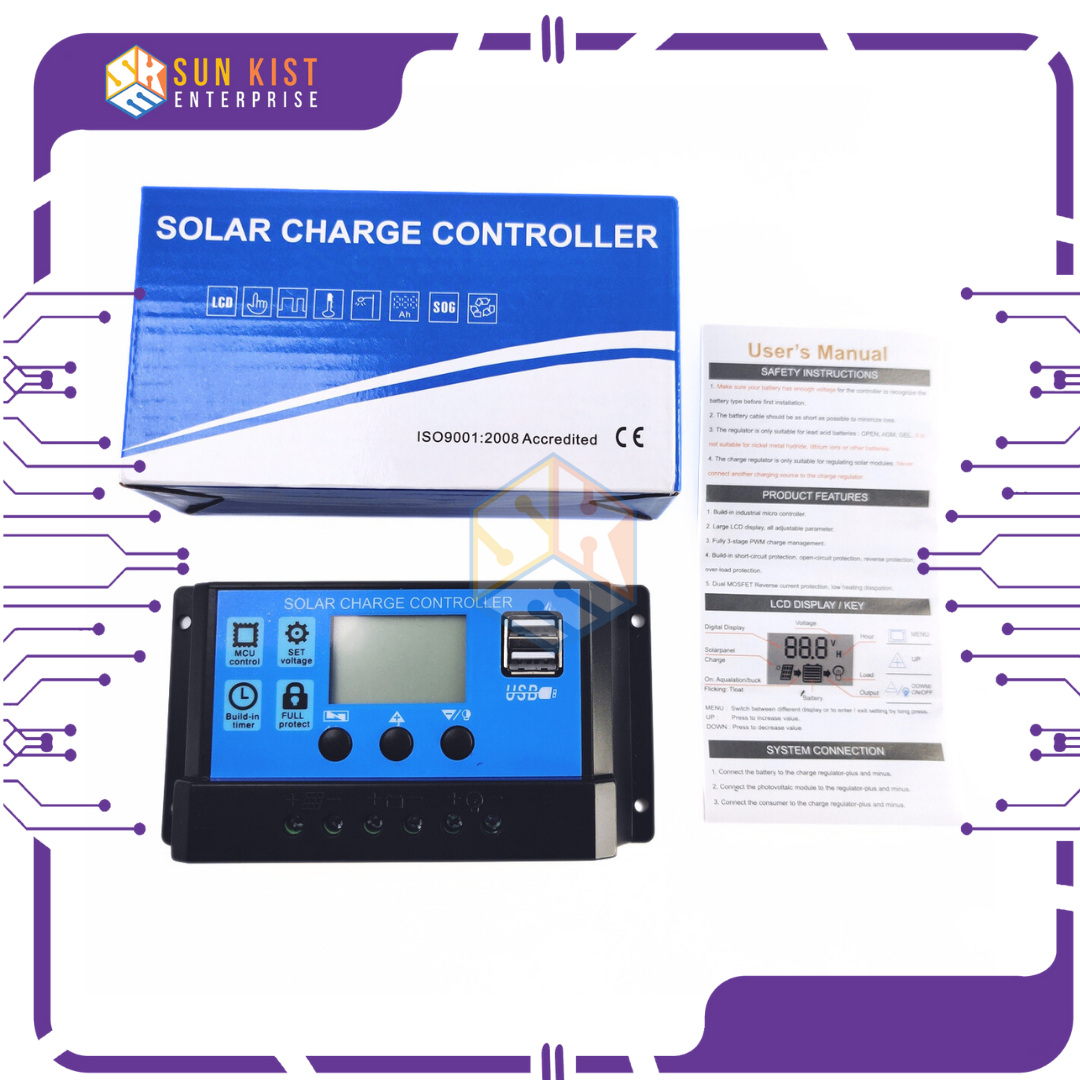Description
Solar Charge Controller 10A 12V” is a specific device used in solar power systems to manage and control the charging of batteries from solar panels. Here’s a description of its key features and characteristics:
1. Current Rating: The “10A” in the name indicates the maximum current capacity of the charge controller. In this case, it can handle up to 10 amperes of current from the solar panels to charge the connected 12-volt battery.
2. Voltage Compatibility: The charge controller is designed for use with 12-volt systems, which are common in small to medium-sized off-grid solar setups, such as RVs, boats, and small remote cabins. It regulates the charging of 12-volt batteries to prevent overcharging and damage.
3. Solar Panel Compatibility: It is designed to work with solar panels that have a voltage output compatible with 12V battery systems. The solar panel voltage should match or be slightly higher than the battery voltage for efficient charging.
4. Charging Regulation: The primary function of a solar charge controller is to regulate the charging process. It prevents overcharging by cutting off the charging current when the battery is fully charged. This extends the life of the battery and ensures its safety.
5. Load Output: Many charge controllers have a load output that can be used to power DC devices or loads directly. This can be helpful for running small appliances, lighting, or other equipment directly from the solar system.
6. Protection Features: Charge controllers often include protection mechanisms, such as overcharge protection, over-discharge protection, short-circuit protection, and reverse polarity protection, to safeguard the battery and the solar system.
7. LED Display: Some charge controllers come with LED displays that show information like battery voltage, charging status, and load status. This can help monitor the system’s performance.
8. PWM or MPPT: There are two common types of solar charge controllers: PWM (Pulse Width Modulation) and MPPT (Maximum Power Point Tracking). PWM controllers are simpler and more affordable, while MPPT controllers are more efficient, especially in situations where the solar panel voltage doesn’t match the battery voltage. The type should be chosen based on the specific requirements of your system.
9. Compact Design: Solar charge controllers are typically compact and designed for easy installation in solar power systems. They often have screw terminals for connecting wires and may be installed in an enclosure or directly on a mounting surface.
10. Suitable Applications: A 10A 12V solar charge controller is commonly used in small to medium-sized off-grid solar systems, including those in recreational vehicles, marine applications, remote cabins, and standalone solar-powered lighting systems.
When selecting a solar charge controller, it’s important to ensure that it is compatible with your specific solar panel and battery setup, as well as the expected load requirements. The charge controller plays a crucial role in optimizing the performance and lifespan of your solar power system.








